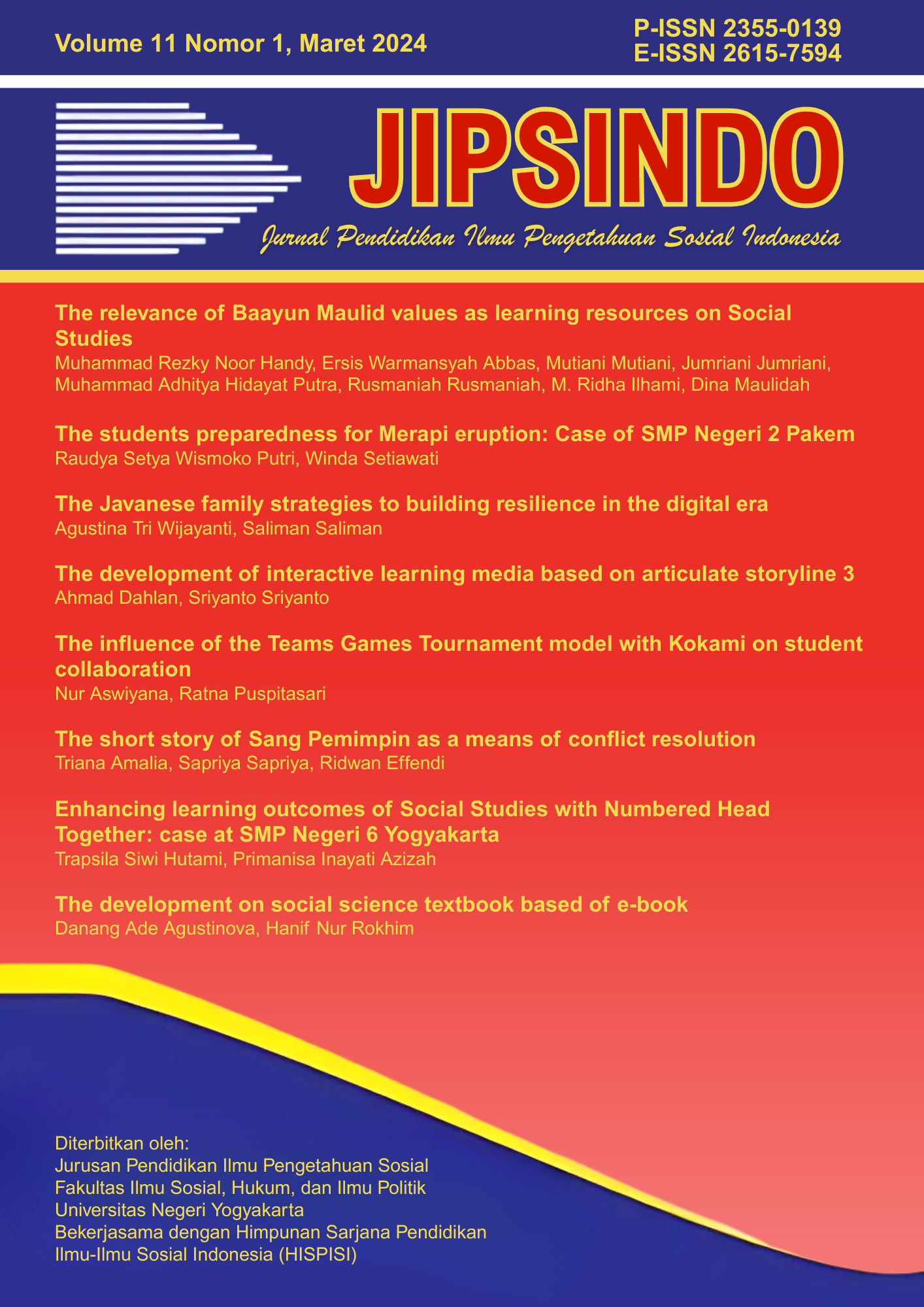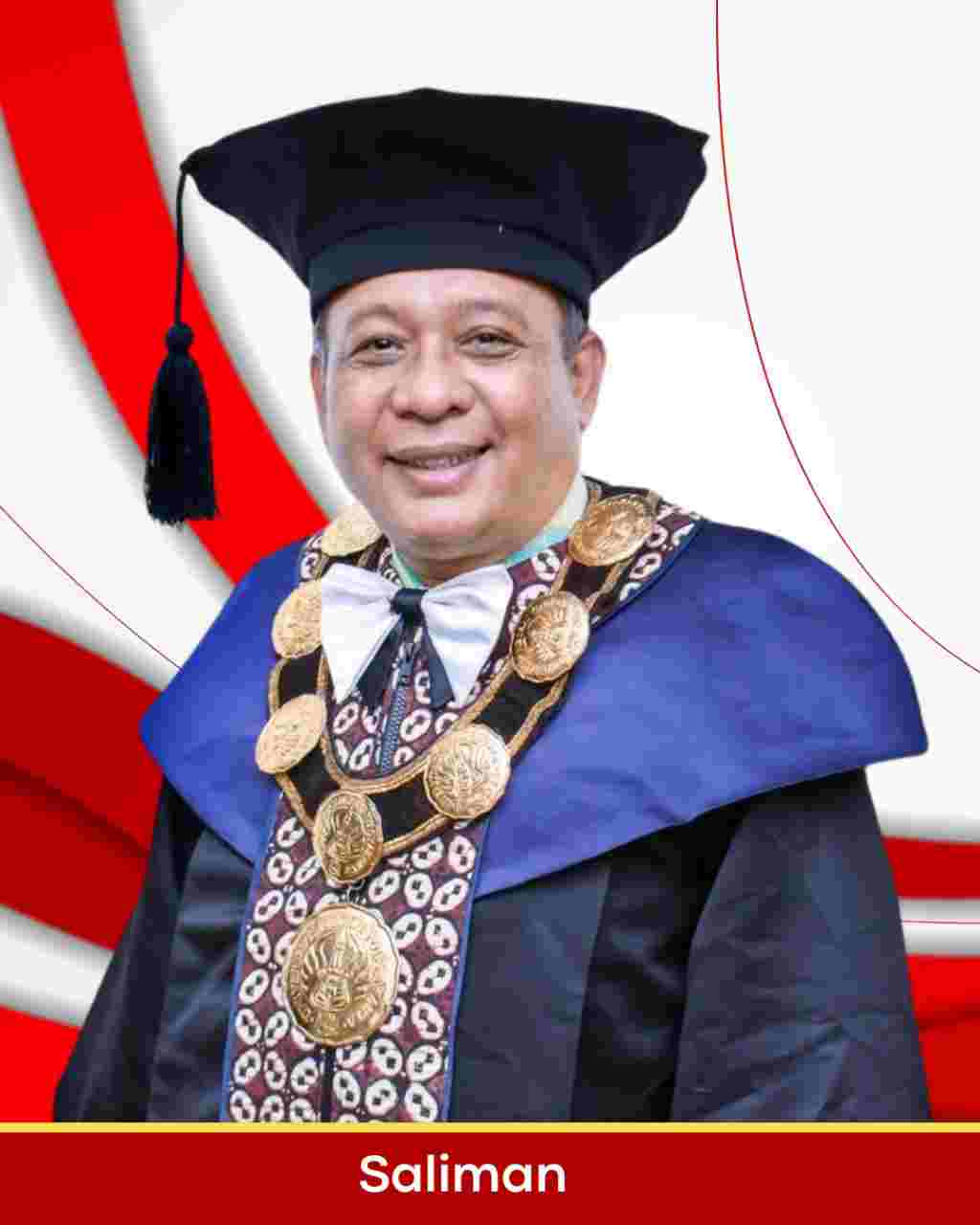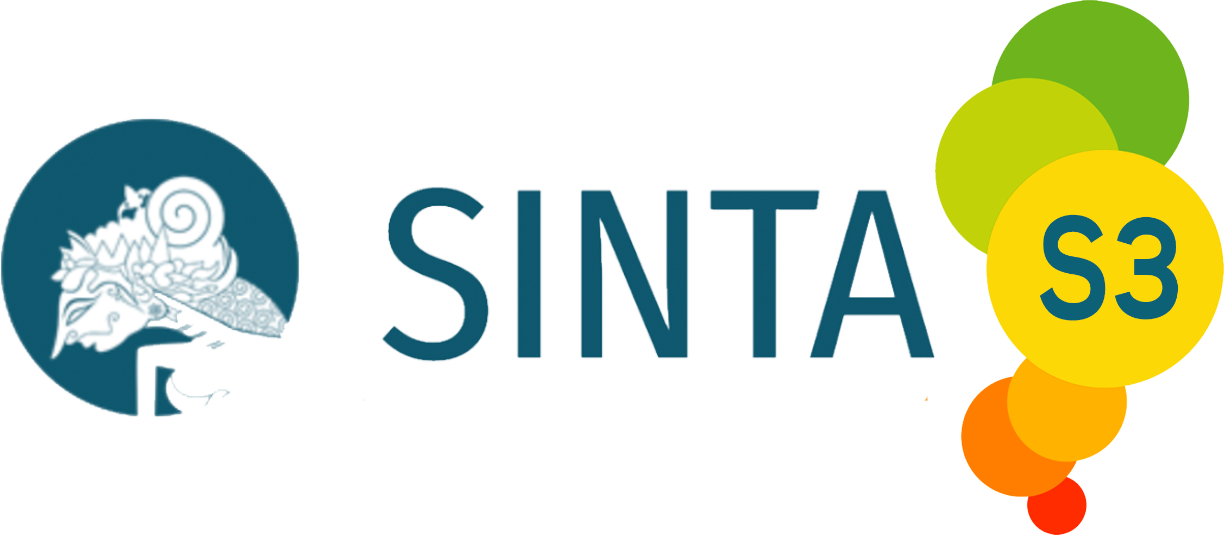The development of interactive learning media based on articulate storyline 3
DOI:
https://doi.org/10.21831/jipsindo.v11i1.65052Keywords:
Learning media, Articulate Storyline 3, Social StudiesAbstract
Utilizing technology in an effective and interactive learning process is driven by the development of science and technology. The teacher's contribution in learning activities as a facilitator and mediator provides facilities for ease of learning. Learning media based on Articulate Storyline 3 is one of the interactive multimedia options that can be used in the learning process. This type of development research is Research and Development (R&D). The development of learning media is carried out through ten steps in Research & Development (R & D) consisting of: 1) Potential and Problems, 2) Data Collection, 3) Product Design, 4) Design Validation, 5) Design Revision, 6) Trial Initial Product, 7) Product Revision, 8) End-Use Trial, 9) Final Product Revision and 10) Mass Production. Testing learning materials and media validation has met the very feasible category. This is evidenced by the results of the material expert validation of 90 with a percentage score of 85.71% and an average score of 4.29. The validation of media experts is equal to the percentage score of 87.86% and the average score is 4.39, indicating that the category group is very feasible. Initial product testing in small classes has validly met the attractiveness and effectiveness categories in use. This is evidenced by the total eligibility score by students from user data with a percentage of 83.08%. Based on the criteria in the eligibility table according to the Likert scale with a percentage of 83.08%, it is in the very feasible category. Testing the final product of developing interactive learning media based on Articulate Storyline 3 in large classes has been valid to meet the eligibility and effectiveness categories in use.
References
Archambault, J. (2008). The effect of developing kinematics concepts graphically before introducing algebraic problem-solving techniques. action research required for the master of natural science degree with a concentration in physics. Arizona State University.
Arsyad, A. (2013). Media pembelajaran. PT. Grafindo Persada.
Asyhar, R. (2011). Kreatif mengembangkan media pembelajaran. Gaung Persada Press.
Benardo. (2011). Perancangan media interaktif belajar mengenal angka bagi anak prasekolah. Universitas Komputer Indonesia.
Dewi, Ika Parma, Rani Safya, A. H. (2021). Membuat media pembelajaran inovatif dengan aplikasi articulate storyline. U Press (ed.)).
Ruli Dwi Nastiti. et. al. (2012). Development Module of Reaction Rate Based on Multiple Representations. Jurnal Pendidikan Kimia,1(2), 9-12.
Hasnul Fikri, A. S. M. (2018). Pengembangan media pembelajaran berbasis multimedia interaktif (m. P. Hendrizal, S.IP. (ed.); 1st ed.). Samudera Biru.
Herwati. (2016). Pengembangan media keanekaragaman aves sebagai sumber belajar biologi. Jurnal Lentera Pendidikan LPPM UM Metro.
Khusnah, N., Sulasteri, S., Suharti, S., & Nur, F. (2020). Pengembangan media pembelajaran jimat menggunakan articulate storyline. Jurnal Analisa, 6(2), 197–208. https://doi.org/10.15575/ja.v6i2.9603
Kustadi, Cecep, dan Sutjipto, B. (2013). Media Pembelajaran: Manual dan digital. Ghalia Indonesia.
Mahnun, N. (2012). Media Pembelajaran (Kajian terhadap Langkah-langkah Pemilihan Media dan Implementasinya dalam Pembelajaran. Jurnal Pemikiran Islam, 37 (1), 27-33.
Mawaa. (2019). Mengenal articulate storyline, (online) (https://polapintar.blogspot.com/2019/08/mengenal-articulate_storyline.html, diakses 9 Desember 2020).
Munadi Yudhi. (2013). Media pembelajaran (sebuah pendekatan baru). Referensi.
Nana Sudjana, A. R. (2010). Media Pengajaran. Sinar Baru Algesindo.
Sadiman, A.S, dkk. (2007). Media Pendidikan : pengertian, pengembangan dan pemanfaatannya. PT. Raja Grafindo Persada.
Sanjaya, W. (2016). Strategi Pembelajaran. Prenadamedia Group.
Selsabila, V., & Pramudiani, P. (2022). Pengembangan Media Pembelajaran Interaktif Articulate Storyline Berbasis Literasi Digital Pada Pembelajaran IPS bagi Siswa Madrasah Ibtidaiyah Negeri. Jurnal Paedagogy, 9(3), 458. https://doi.org/10.33394/jp.v9i3.5372
Setiawan, Y. (2019). Pengaruh Media Pembelajaran Berbasis Komputer Model Simulasi terhadap Hasil Belajar Siswa IPS Kelas VIII SMPN 1 Bontonompo. Universitas Muhammadiyah Makassar.
Shoffa, S., Holisin, I., Palandi, J. F., Cacik, S., Indriyani, D., Supriyanto, E. E., Basith, A., & Gia, Y. C. (2021). Perkembangan Media Pembelajaran Di Perguruan Tinggi. CV. Agrapana Media.
Sudrajat, Saliman, Supardi (2023). Sketsa pembelajaran IPS: Menuju pembelajaran abad 21. Penerbit Adab.
Sugiyono. (2013). Metode Penelitian Pendidikan Pendekatan Kuantitatif, Kualitatif, dan R&D. Alfabeta.
Suharsimi Arikunto. (2002). Prosedur Penelitian Suatu Pendekatan Praktek. Rineka Cipta.
Surayya. (2012). Media elektronik sumber pembelajaran. Kencana.
Wibowo, S. A., Nursalam, H., & Muhajir, M. (2022). Pengembangan Media Pembelajaran Interaktif Pada Pembelajaran Ips Kelas Iv Tema 9 Berbasis Aplikasi Articulate Storyline 3. Jurnal Ilmiah Mandala Education, 8(3), 2142–2152. https://doi.org/10.58258/jime.v8i3.3643
Downloads
Published
How to Cite
Issue
Section
Citation Check
License
Authors who publish with this journal agree to the following terms:
- Authors retain copyright and grant the journal right of first publication with the work simultaneously licensed under a Creative Commons Attribution License that allows others to share the work with an acknowledgement of the work's authorship and initial publication in this journal.
- Authors are able to enter into separate, additional contractual arrangements for the non-exclusive distribution of the journal's published version of the work (e.g., post it to an institutional repository or publish it in a book), with an acknowledgement of its initial publication in this journal.
- Authors are permitted and encouraged to post their work online (e.g., in institutional repositories or on their website) prior to and during the submission process, as it can lead to productive exchanges, as well as earlier and greater citation of published work (See The Effect of Open Access).

JIPSINDO (Jurnal Pendidikan Ilmu Pengetahuan Sosial Indonesia) is licensed under a Creative Commons Attribution-ShareAlike 4.0 International License.
Based on a work at https://journal.uny.ac.id/index.php/jipsindo.
















